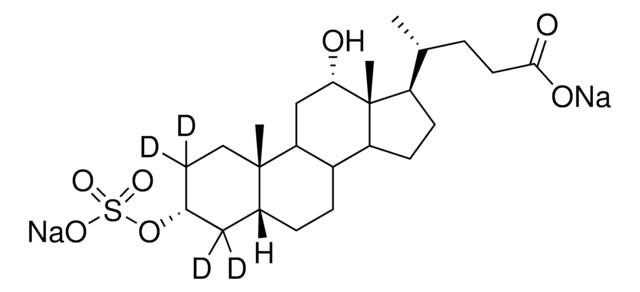1.01646
PAS staining kit
for detection of aldehyde and mucosubstances
About This Item
Productos recomendados
Quality Level
IVD
for in vitro diagnostic use
application(s)
clinical testing
diagnostic assay manufacturing
hematology
histology
storage temp.
15-25°C
Categorías relacionadas
General description
The kit can be used for clinical diagnostic purposes and in laboratory accreditation processes as it is certified and registered as IVD and CE product. For more details, please see instructions for use (IFU). The IFU can be downloaded from this webpage.
Analysis Note
nuclei: blue
acid mucosubstances: light blue
polysaccharides: purple
neutral mucopolysaccharides: purple
hcodes
pcodes
Hazard Classifications
Aquatic Chronic 3
Storage Class
12 - Non Combustible Liquids
wgk_germany
WGK 2
flash_point_f
Not applicable
flash_point_c
Not applicable
Certificados de análisis (COA)
Busque Certificados de análisis (COA) introduciendo el número de lote del producto. Los números de lote se encuentran en la etiqueta del producto después de las palabras «Lot» o «Batch»
¿Ya tiene este producto?
Encuentre la documentación para los productos que ha comprado recientemente en la Biblioteca de documentos.
Los clientes también vieron
Contenido relacionado
Learn about the criticality of biological tissue staining for research and clinical pathology using standard and special stains and dyes.
Conocer la criticidad de la tinción de los tejidos biológicos para investigación y anatomía patológica utilizando colorantes y tintes convencionales y especiales.
Nuestro equipo de científicos tiene experiencia en todas las áreas de investigación: Ciencias de la vida, Ciencia de los materiales, Síntesis química, Cromatografía, Analítica y muchas otras.
Póngase en contacto con el Servicio técnico














